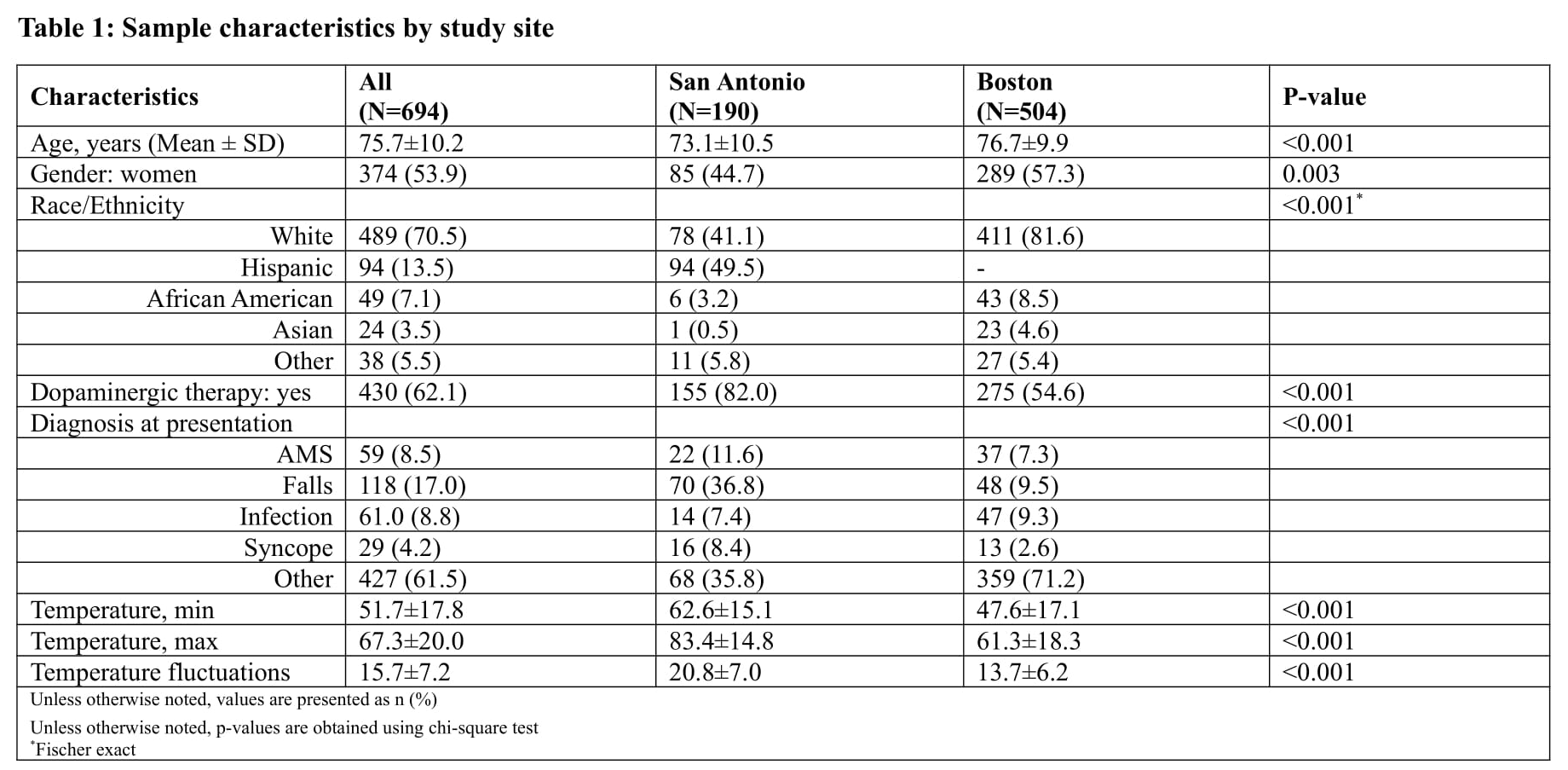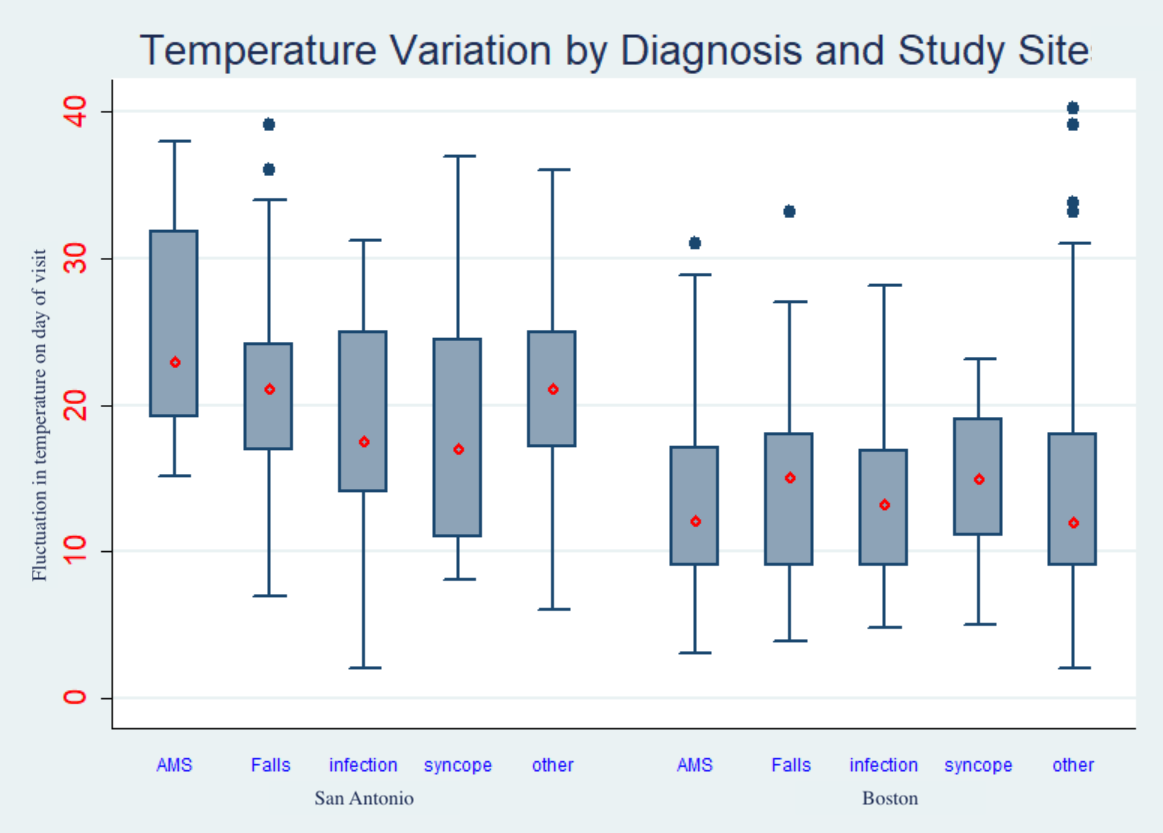Objective: We aim to examine the impact of ambient temperature fluctuations on Parkinson’s disease (PD) patients across two distinct climates.
Background: PD is a neurodegenerative disorder with symptoms such as orthostatic hypotension (OH). We hypothesize that temperature variabilities impact symptoms of autonomic failure in PD such as OH, leading to falls and syncope.
Method: We studied patients with PD presenting to two university hospital emergency departments (ED) – in San Antonio, Texas and Boston, Massachusetts – between July 2020 and September 2023. Initial presenting symptoms at the ED or admissions to the hospital were stratified into five categories: altered mental status (AMS), falls, infection, syncope, and other. The primary dependent variable was the five initial reasons for presentation to the ED or on hospital admission for further care. Independent variables of interest included demographic variables (age, gender, and race/ethnicity), dopaminergic therapy, and daily temperature difference. We first generated basic descriptive statistics for all participants. Differences between patients across subgroups of diagnosis were compared using independent t-test and Pearson’s chi-square test. Logistic regression was performed to explore the association between temperature variation and diagnosis on presentation to the ED or hospital admission while controlling for potential confounders. We used STATA 13.0 statistical software for all analysis.
Results: 694 total encounters were included in our analysis. The study population’s average age was 75.7±10.2 years; most were female (53.9%) and White (70.5%) (Table 1). Patients across the two study sites were significantly different regarding demographic characteristics as well as distribution of presenting symptomatology across the subgroups of interest. Multinomial logistic regression analysis found significantly increased risk of presenting to the ED with AMS and falls with every unit increase in daily temperature fluctuation (Table 2). Temperature fluctuation severity among ED visit reasons differed between the two sites (Figure 1).
Conclusion: Acute variations in temperature lead to a higher risk of AMS and falls among patients with Parkinson’s disease. This finding is seen across two distinct sites with differing geographical climates. Further follow up studies are needed to investigate this trend further.
Sample characteristics by study site
Predictors of diagnosis at presentation/diagnosis
Temperature variation by diagnosis and study site
To cite this abstract in AMA style:
S. Vallamkonda, D. Petrosyan, B. Westbrook, N. Kakos, C. Hinds, R. Adlis, A. Menta, J. Lowry, D. Brooks, O. Hofheinz, P. Bhaya, J. Kong, M. Muppirala, A. Benchouia, A. Fajayan, A. Hohler, E. Vaou. Impact of Temperature Variation on Emergency Department Visits for Parkinson’s Disease Patients Amongst Two Sites [abstract]. Mov Disord. 2024; 39 (suppl 1). https://www.mdsabstracts.org/abstract/impact-of-temperature-variation-on-emergency-department-visits-for-parkinsons-disease-patients-amongst-two-sites/. Accessed December 31, 2025.« Back to 2024 International Congress
MDS Abstracts - https://www.mdsabstracts.org/abstract/impact-of-temperature-variation-on-emergency-department-visits-for-parkinsons-disease-patients-amongst-two-sites/



